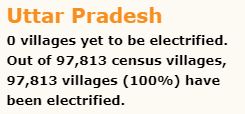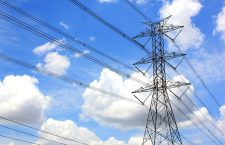A village in Chitrakoot, Bundelkhand, awaits the benefits of rural electrification, even as it continues to pay for it – literally.
“We need some light to cook our food in the evening, but there isn’t ever any power. We don’t need it at any other time of the day – we are out working in the fields all day and then we sleep at night. Lekin yeh bhi naseeb nahi (But alas, it’s not in our fate).”
Dayaram, farmer and a resident of Rampuriya village in Chitrakoot district in Bundelkhand, puts it as plainly and matter-of-factly as possible – the fact that his expectations are so low says a lot about Uttar Pradesh rural electrification facts in general though.
In 2016, Rampuriya got the most power connections, and hopes had arisen because electricity metres were installed within six months. But most of them were defunct and almost two years down the line, they remain so. “Some have even burned up”, Khabar Lahariya Chitrakoot reporter Sahodra informs us.
But what is particularly abysmal about this rural electrification scenario is that the electricity bills have been coming regularly and they have been piling up – to the tune of 18,000, 20,000, 25,000, impossible amounts for rural households. As Anil Kumar Prajapati says, “To light one bulb, can we seriously be getting these bills?” The incredulity of his tone echoes through the galis of Rampuriya village; Sumitra Devi semi-shrieks, “17,000! How is it possible, you tell me?”
According to an Indiaspend report, power cuts were among the leading issues among U.P. voters during the 2017 Lok Sabha elections, with 28% of the voters citing it as the main problem of the state, second only to employment. The survey also put the number of voters who experienced power cuts on a daily basis at 38%. Perhaps the ruling party at the center’s touted achievement after having completed over two years in power – that 73% of the 18,452 villages identified for electrification in 2015 nationally, had got the promised power supply – is what worked for it in U.P. in 2017. But statistics can be misleading.
Official data for Chitrakoot, for instance, where Rampuriya is situated, claims 42% intensive electrification for the entire district. (Intensive electrification is a few leagues deeper than electrification, referring to remote and inaccessible areas being linked to the main power network). Another impossible statistic is the state-one, displayed proudly on the Deen Dayal Upadhyaya Grameen Jyoti Yojana (DDUGJY), which showcases data from the Rural Electrification Corporation Ltd (REC), the nodal agency executing the policy: 100% it says if you hover your mouse over Uttar Pradesh.
Ashok Kumar Pande, Sub Station Operator at Chitrakoot doesn’t sound hopeful about the last mile connectivity, “Actually, the meters might need some checking-up.” He also offers strong advice to the Rampuriya village residents, “When the officials come to visit, they should raise this issue, bring their bills along. Aise ghar mein baithkar bolne se kuch nahi hoga. (There’s no point in them sitting at their homes and complaining).”
He should perhaps relay this information to Dayaram as he tills his fields all day and hopes for that one bulb giving him company for his roti-making chore in the evening.
Meanwhile, the deadline for electrifying all villages in India, after missing the May 2017 target, now stands at May 2018. Well, that’s just a few days away now.
– Pooja Pande
This article first appeared on The Wire.
 eo Report
eo Report
